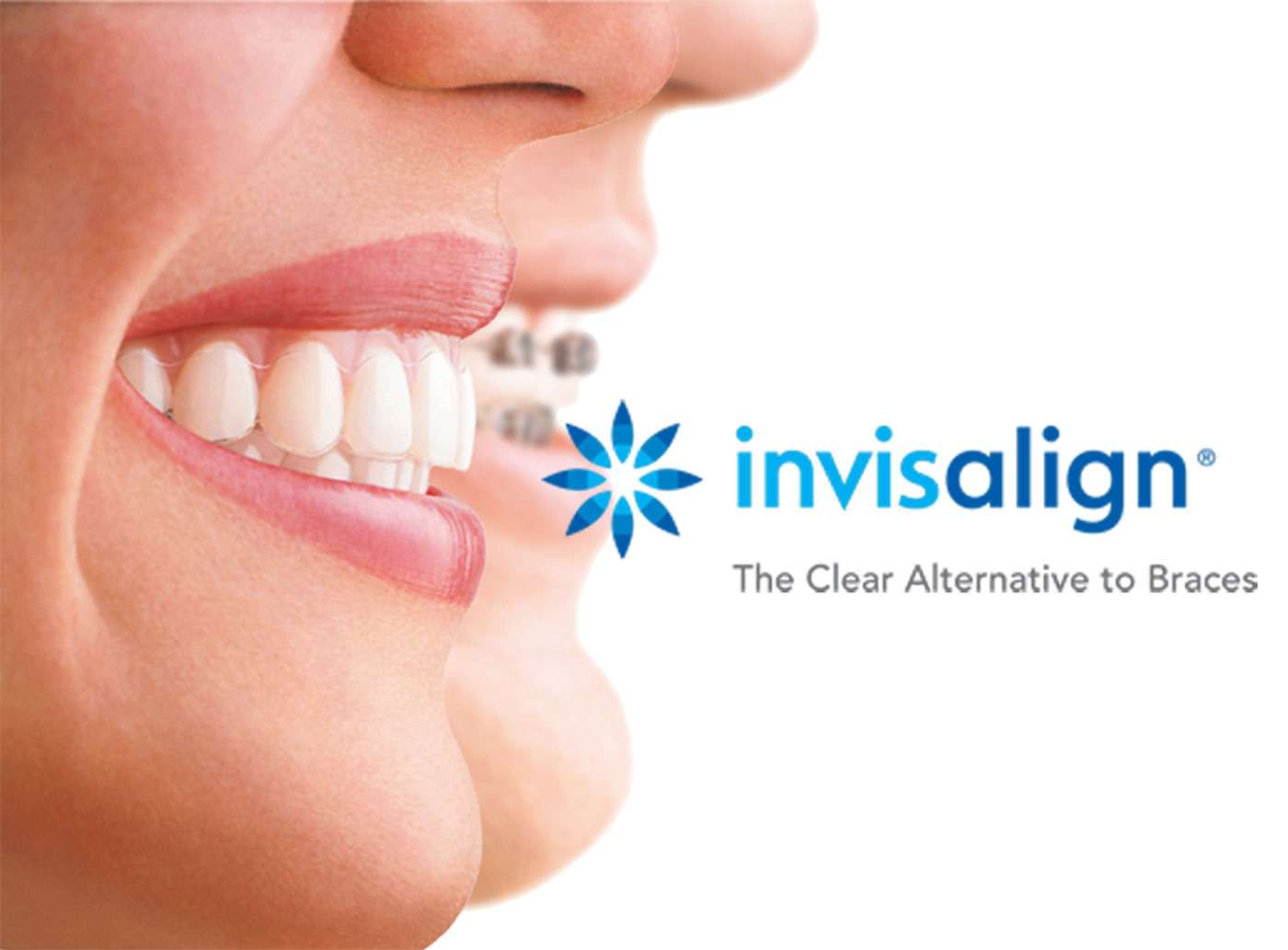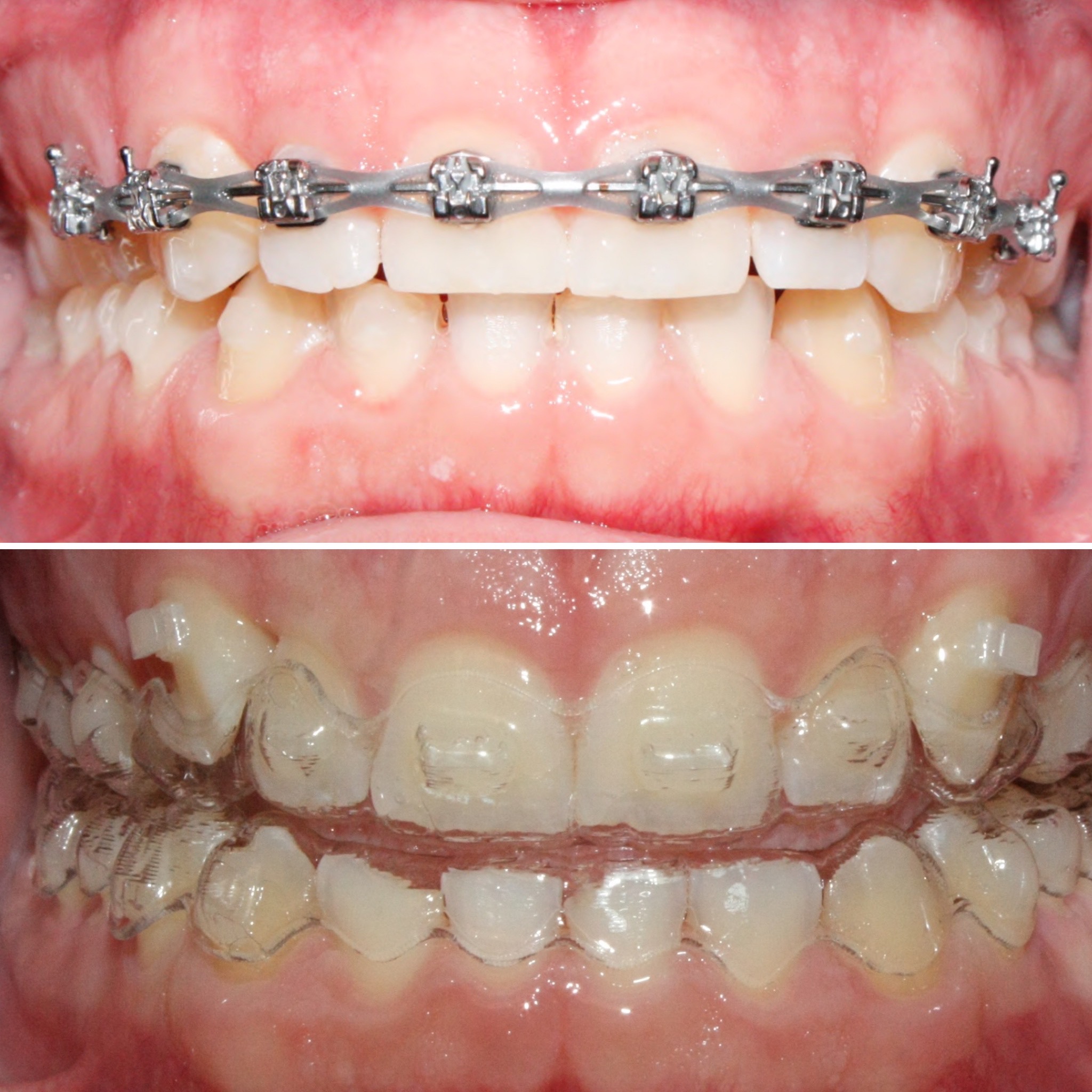The Cost of Invisalign: Recognizing the Investment in Your Smile
The Cost of Invisalign: Recognizing the Investment in Your Smile
Blog Article
Invisalign vs. Traditional Dental braces: Which Alternative Is Right for You?
When taking into consideration orthodontic therapy, the option between Invisalign and traditional braces provides a number of essential elements that merit cautious assessment. Invisalign uses a discreet choice with removable aligners, while typical braces offer a more noticeable yet effective service for serious misalignment. Each alternative encompasses unique advantages and downsides associated with aesthetics, comfort, treatment duration, and price. Understanding these subtleties is crucial for making an informed choice that lines up with your personal preferences and way of living. The inquiry remains: which choice will best fulfill your orthodontic demands and expectations?
Summary of Treatment Choices

In comparison, standard dental braces contain steel braces and cables that are bonded to the teeth. This technique uses continual stress in time to achieve positioning. While effective for complicated orthodontic concerns, typical braces require routine gos to for modifications and can posture challenges in preserving oral hygiene due to the problem of cleaning around cords and brackets.
Both alternatives have their qualities, and the choice often depends upon specific dental problems, way of living preferences, and client compliance. Ultimately, getting in touch with an orthodontic specialist is crucial for determining the most appropriate treatment strategy tailored to individual requirements. Comprehending the subtleties of each choice can substantially affect the overall success of orthodontic therapy.
Visual Factors To Consider
A significant factor influencing the option between Invisalign and typical dental braces is the visual allure each treatment provides. Invisalign aligners are crafted from clear plastic, making them practically undetectable when used.
On the other hand, standard dental braces contain metal brackets and wires, which can be a lot more obvious. While improvements in orthodontic innovation have caused the advancement of smaller brackets and tinted elastics, standard dental braces still preserve a more noticeable profile. For some individuals, the presence of dental braces might prevent them from seeking necessary therapy.
Ultimately, the option between Invisalign and conventional dental braces may hinge on personal preferences pertaining to aesthetics. Patients that prioritize discernment typically lean towards Invisalign, while those who are much less concerned about visibility may choose typical dental braces. Understanding the aesthetic implications of each option is vital for making an informed decision that aligns with one's way of living and preferences.
Convenience and Convenience

In regards to convenience, Invisalign go right here aligners are detachable, allowing individuals to appreciate their favored foods without limitation and preserve optimum oral hygiene. Cleaning and flossing are streamlined, as the aligners can be gotten during these routines, whereas typical dental braces call for mindful maneuvering around cables and brackets.
Furthermore, Invisalign's modern system permits less orthodontic gos to. Patients usually obtain several collections of aligners at when, which can streamline the treatment process and minimize time spent in the orthodontist's chair. In comparison, traditional dental braces necessitate regular adjustments, making them much less practical for those with busy schedules. Invisalign. Overall, the convenience and comfort of Invisalign make it an enticing choice for numerous individuals looking for orthodontic treatment.
Therapy Period and Performance
While both Invisalign and standard dental braces are reliable special info in remedying dental imbalances, the duration of therapy can vary considerably in between the two choices. Commonly, Invisalign treatment can take anywhere from 12 to 18 months, depending on the complexity of the instance. The clear aligners work by slowly shifting teeth into their wanted placements, and regular follow-ups with an orthodontist aid make sure progression stays on track.
On the other hand, standard dental braces commonly call for a longer commitment, generally varying from 18 months to 3 years. This results from their fixed nature and making use of braces and wires, which can be a lot more reliable for intricate cases and extreme misalignments (Invisalign). The treatment effectiveness of conventional dental braces is well-documented, as they enable precise adjustments and greater control over tooth activity
Ultimately, the option in between Invisalign and typical dental braces might depend upon both the awaited treatment duration and the specific oral issues handy. Consulting with an orthodontist is crucial, as they can provide customized referrals based upon private needs, ensuring the picked technique aligns with preferred results and durations.
Expense Comparison and Insurance Options
Expense plays a significant duty in the decision-making process for people taking into consideration orthodontic treatment, whether opting for Invisalign or typical braces. Generally, the expense of Invisalign varieties from $3,000 to $8,000, while traditional dental braces typically cost in between $2,000 and $6,000. Factors influencing these costs include the complexity of the case, the duration of therapy, and geographical location.
Insurance coverage can This Site substantially influence out-of-pocket expenditures. Numerous oral insurance coverage strategies offer partial insurance coverage for orthodontic treatments, however the specifics can vary widely. It is critical for patients to examine their insurance plan to identify the extent of coverage for either alternative. Generally, conventional dental braces may be more often covered by insurance coverage plans compared to Invisalign, which some insurers classify as an aesthetic procedure.
Additionally, numerous orthodontic practices supply adaptable layaway plan, making both therapy choices much more obtainable. People should make inquiries concerning potential funding options and price cuts for ahead of time repayments. Examining the total cost, consisting of insurance advantages and payment plans, is crucial for making an educated decision that lines up with both visual choices and budget factors to consider.

Verdict
In recap, the option in between Invisalign and standard dental braces rests on several elements, consisting of visual choices, comfort, treatment period, and price. Invisalign provides a very discreet, removable choice that facilitates dental hygiene and dietary versatility, while conventional dental braces might be preferable for intricate oral issues and usually come at a reduced price point. Inevitably, appointment with an orthodontist is necessary to examine private conditions and determine the most suitable treatment choice for achieving optimum oral positioning.
When considering orthodontic therapy, the choice between Invisalign and conventional braces presents a number of important aspects that merit careful evaluation.Contrasting Invisalign and traditional dental braces discloses distinct treatment options for orthodontic improvement.While both Invisalign and traditional dental braces are efficient in correcting oral imbalances, the duration of therapy can vary dramatically in between the 2 alternatives.Cost plays a significant role in the decision-making procedure for people taking into consideration orthodontic treatment, whether deciding for Invisalign or conventional braces.In summary, the selection between Invisalign and standard dental braces pivots on multiple elements, including visual choices, comfort, therapy duration, and cost.
Report this page